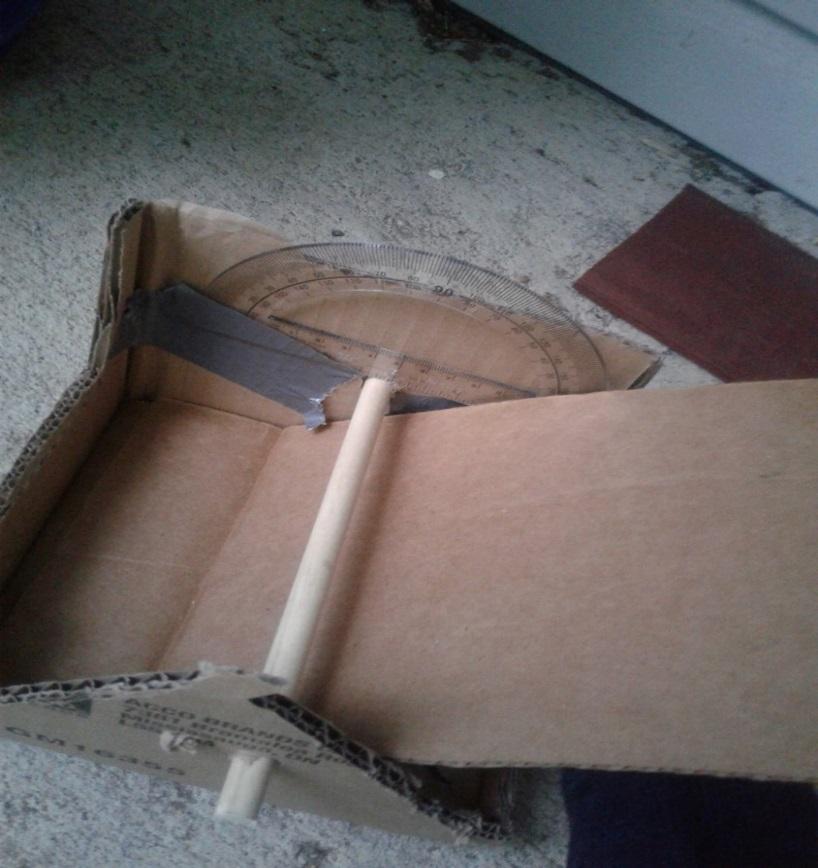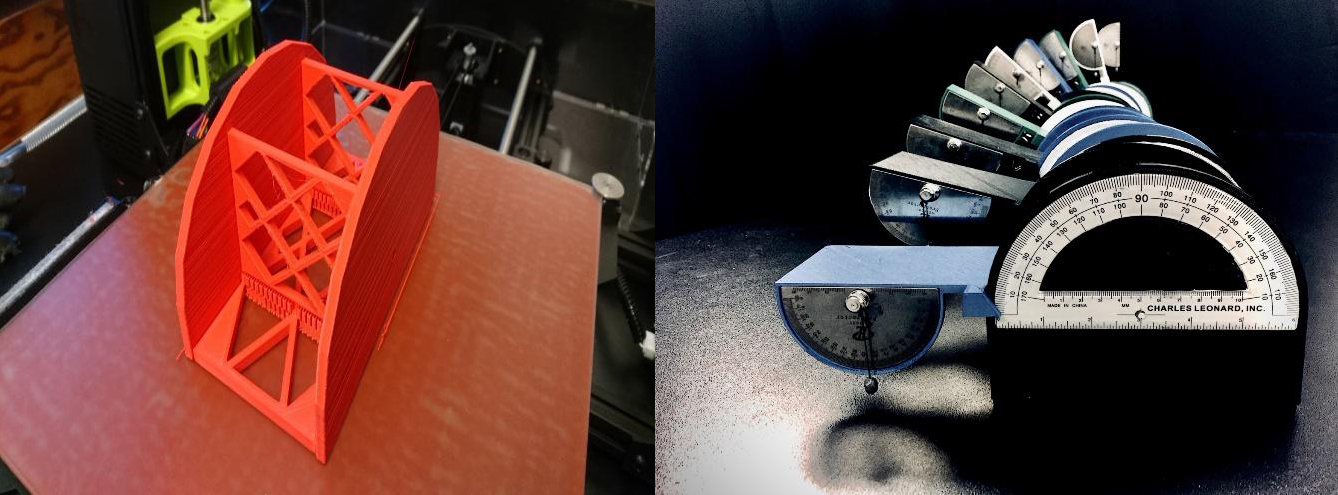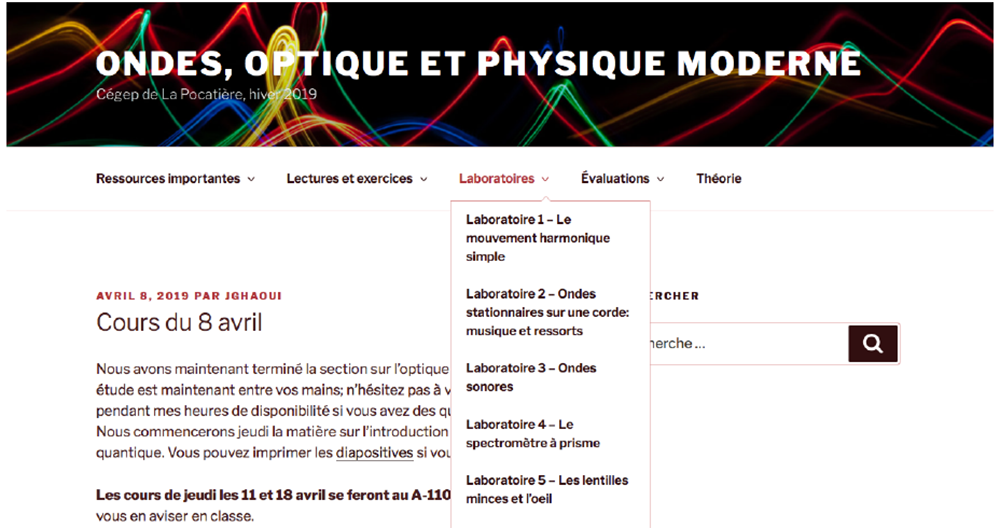ICT Pedagogical Resources for the Authentic Teaching of Physics
Making learning physics more concrete and helping students perceive its real-life application is an everyday challenge for physics teachers. To help them face that challenge, Profweb offers an updated version of its discipline-related file published in 2015 on its website. You will re-discover:
- the real life stories and articles from teachers who have integrated technologies in an innovative manner to encourage students’ involvement in their courses
- digital resources from our ICT partners to improve your learning activities
Profweb Publications
Using everyday technologies to teach physics
-
Facebook Groups to Stimulate Student Interest in Subject Matter
Éric Laflamme, Cégep Édouard-MontpetitIn this real life story, Éric Laflamme retells how he used a Facebook group to bring his students to become aware of the concrete applications of physics theories. He created a private Facebook group for his students in which they had to share at least 4 publications related to the content of the course.
Why choose Facebook? This social media platform allows him to break down the walls of his classroom, which now finds an antenna outside of the institutional platforms. The students’ publications appear among those of their friends on their news feed, which they consult daily. Moreover, this activity allows Éric Laflamme to make his students aware of fake news.
-
Accelerated Learning with Smartphones in Physics
Ryan W. Moon, ProfwebIn the article “Accelerated Learning with Smartphones in Physics”, Ryan, our editor, presents how Chris Isaac Larnder and his team have found an innovative way to integrate the smartphone of their students (more precisely, the accelerometer it contains) in their laboratories about fundamental notions of physics:
- inclined plane
- circular motion

The first prototype of a cardboard tilt tray used during the laboratory about tilt (Photograph: Chris Isaac Larnder)
The fact that the students use their cellphone in their physics laboratory makes them more enthusiastic and attentive to the content.
-
3D-print Technology for Smartphone-based Physics Experiments
Chris Isaac Larnder, John Abbott CollegeIn his real life story “3D-print Technology for Smartphone-based Physics Experiments”, Chris Isaac Larnder explains how he brought the two laboratories he had conceived to another level with the accelerometers of the smartphones. Thanks to 3D printing, he was able to create the material necessary for his laboratories.
-
Des laboratoires dont vous êtes le héros [In French]
Jade Ghaoui, Cégep de La PocatièreIn an attempt to increase the participation and motivation of her students during physics laboratories, Jade Ghaoui chose to flip her laboratories by focusing on the prelaboratory work. The students better understand the manipulations that they do afterward. Thus, they avoid manipulation mistakes and have more time to interpret their results. Jade Ghaoui created videos about theory, in-laboratory manipulation and data analysis for them. Thanks to a better understanding of the theory and the labs, the “discussion” sections of the mini-reports that the students write at the end of the laboratories have improved in quality.

Jade Ghaoui’s website for the Waves, Optics and Modern Physics course. The site, created with WordPress, is hosted on a Profweb Web Space.
Excerpts from videos used during Jade Ghaoui’s inverted laboratories.
-
Creating Digital Course Notes to Make Learning Easier
Luc Tremblay, Collège MériciMany physics textbooks are available on the market, but the realization that Luc Tremblay came to, after more than 15 years of teaching, is that they did not perfectly fit his needs. He then decided to create his own course notes containing theory and exercises, but also many explanatory figures and hyperlinks to videos illustrating different physics phenomena. With material that reflects his courses, Luc Tremblay has more time to spend on active learning in class. As the students no longer have to write down the notes that were complementary to the textbooks, they can now focus on the content more. Besides, the quality of his course notes have allowed Luc Tremblay to win the 2014 Prix du ministre (for his mechanical physics notes) and the 2017 Cap Award for Excellence in Teaching High School/CEGEP Physics for his project as a whole. PDF versions of his course notes are publicly available on his website, Physics at Mérici.
-
Using Geogebra within Moodle to Give Physics Students Instantaneous Feedback
Kevin Lenton, Vanier CollegeGeoGebra is a free open platform first created to teach mathematics, about which Profweb has already published a “Digital Tools” page. Kevin Lenton uses it for his physics courses. With this platform, he has developed brief formative and summative activities that his students do alone or in teams. GeoGebra offers a graphical representation of different physics problems the students must solve. Moreover, the platform allows to receive instant feedback when manipulating a graphic. The use of the platform is very intuitive: Kevin Lenton only needed to show its functioning to his students once. GeoGebra can be integrated with Moodle. The students connect to their Moodle account to access the activities. This allows the teacher to observe the progress of their students and to orient their interventions in the classroom.
- The website Problem-Based Learning for College Physics was put online in 2008 and offers class-tested problem-based learning activities to college teachers. In 2016, 20 new problem-situations were added to the website. It was the subject of an article on the Profweb website.
- In November 2019, the book Sketches of the History of Science, by Justine Bell and Justin Marleau, was published electronically and on paper. The illustrated book traces back the history and the philosophical foundations that hide behind science and sheds a fun light on the complex phenomena of biology, chemistry, and physics.
- In the summer 2016 edition of the Pédagogie collégiale journal, Nathaniel Lasry, Jonathan Guillemette, Michael Dugdale, Elizabeth Charles, and Eric Mazur published the article “Two Steps Forward, One Step Back”. The authors explain how it is possible to measure the scope of one’s teaching using the erroneous Newtonian conceptions of students as a base. Measuring the students’ conceptual progress and their setbacks at the beginning and the end of the semester with the help of the Force Concept Inventory (FCI) test allows the teacher to have a better idea of the way that the students learn and acquire complex competencies. The researchers noted that the students that had received more traditional teaching (for example, lecture-based classes), “had made significantly less important conceptual progress than those students who had benefited from active learning.” Based on this study, it is possible to demonstrate that the conceptions are “unstable and fluctuating” and that the construction of a world vision is not a linear process.
Note from the editor:
For more information on Chris Isaac Larnder’s process and to view his pedagogical documents and 3D printing files, please see his real life story published on the Profweb website.
The webinar, “Impression 3D: quel potentiel pour les laboratoires de physique?” [in French] by Chris Isaac Larnder and his colleague, Étienne Portelance, can be found on the APOP website. In this 50-minute webinar split in two parts, they explain in detail how they used 3D printing to create their equipment for the physics laboratories.





